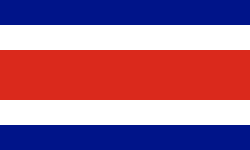An editor has nominated this article for deletion. You are welcome to participate in the deletion discussion , which will decide whether to keep it. |

The following is an alphabetical list of topics related to the Republic of Costa Rica .
An editor has nominated this article for deletion. You are welcome to participate in the deletion discussion , which will decide whether to keep it. |

The following is an alphabetical list of topics related to the Republic of Costa Rica .



| | This section is empty. You can help by adding to it. (July 2010) |
| | This section is empty. You can help by adding to it. (July 2010) |